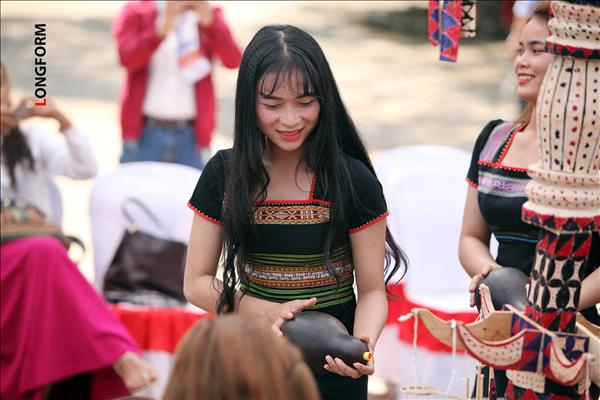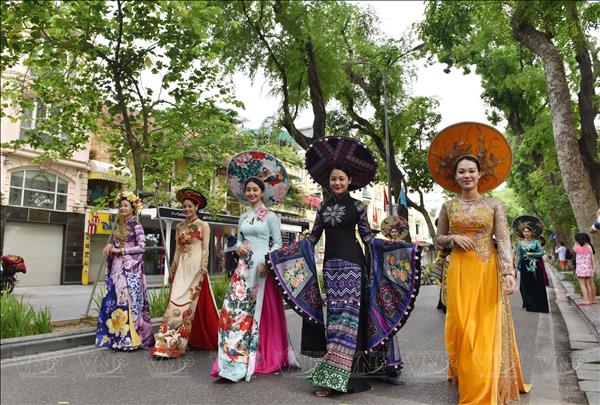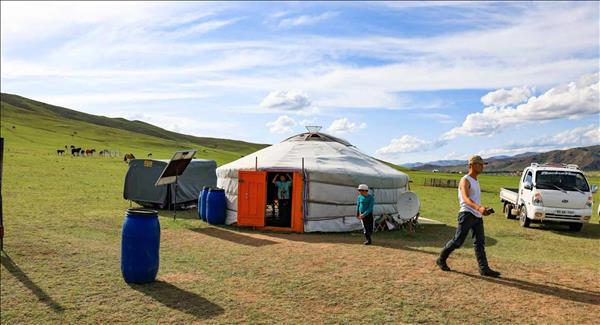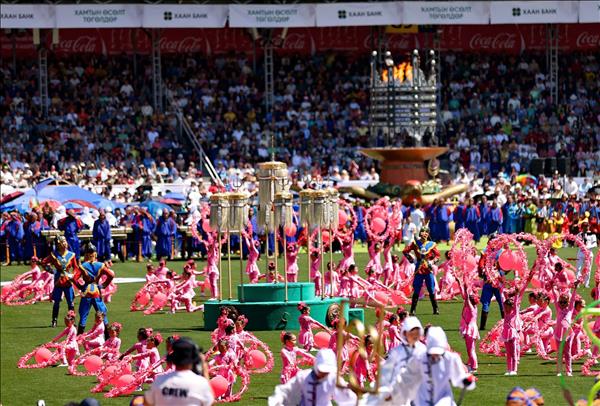Vietnam is one of few countries in the world that has an industry of farming and processing salagane nests. Khanh Hoa Province has the largest number of islands which are home to the salanganes and its products have been rated as having the best quality.
700-year-old business of raising salanganes
Thousands of years ago, salangane nests were considered a precious product of heaven and earth which served as “a miracle drug” so it was reserved only for kings.
According to history books, the business of producing salangane nests in Vietnam originated from Khanh Hoa Province and has existed for nearly 700 years. Legend has it that in 1328, during a mission to the south, Le Van Dat, a commander of the provincial army in the Tran Dynasty discovered many islands inhabited by the salanganes in the sea area of Binh Khang District (now Khanh Hoa Province). Since then the business of producing salangane nests has developed and Le Van Dat has been honoured as the ancestor of this business in Khanh Hoa Province. Every year, on the 10th of May according to the lunar calendar, the residents in Khanh Hoa organize a salagane nest festival to commemorate those who are credited with establishing the salangane nest production business.
Thousands of years ago, salangane nests were considered a precious product of heaven and earth which served as “a miracle drug” so it was reserved only for kings.
According to history books, the business of producing salangane nests in Vietnam originated from Khanh Hoa Province and has existed for nearly 700 years. Legend has it that in 1328, during a mission to the south, Le Van Dat, a commander of the provincial army in the Tran Dynasty discovered many islands inhabited by the salanganes in the sea area of Binh Khang District (now Khanh Hoa Province). Since then the business of producing salangane nests has developed and Le Van Dat has been honoured as the ancestor of this business in Khanh Hoa Province. Every year, on the 10th of May according to the lunar calendar, the residents in Khanh Hoa organize a salagane nest festival to commemorate those who are credited with establishing the salangane nest production business.
 The beauty of Noi Island, one of the three islands which has high salagane nest productivity in Khanh Hoa Province. Photo: Tat Son 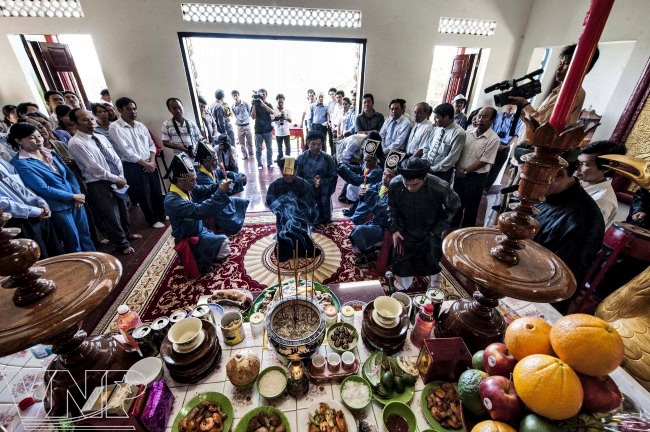 The salagane nest festival is held annually on May 10 according to the lunar calendar at the shrine where people worship those who are credited with establishing the salagane nest production business on Noi Island. Photo: Minh Ngoc |
On a fine day in July, we took a speedboat ride to visit some of the 30 salangane islands in Khanh Hoa Province. The most famous islands are Noi, Ngoai and Sam. From afar, we saw some watch towers of the guards on the steep cliffs. Going closer we heard the noises made by the birds. Khoa, a guard on the island took us to visit the birds’ caves which were very deep and dark with steep cliffs. Under the light of torch we saw countless salangane nests on the cliffs. Khoa said that the salanganes lived in the wild areas. If there was human smell, they were scared and would leave their nests, so their caves are strictly protected to prevent people from going near them.
Ngoai Island is several kilometers away. It has the largest number of salangane caves, making up two-thirds of the nests produced by the province. The sea here is very rough, so the caves must be carefully protected. The company has taken many measures, such as making roofs for the caves, building dykes and installing surveillance cameras.
Vo Van Cam, head of the team harvesting the bird nests of the company told us that harvesting the nests is a risky business, but three generation of his family have been doing it. The birds usually make their nests on the high cliffs, so the workers must be skilled and brave mountain-climbers. To harvest their nests they have to erect bamboo scaffoldings on the steep cliffs. In some places where they can not erect scaffoldings they must use rope to secure themselves to the mountain side, which is hundreds of metres high, in order to climb up.
According to scientists at the Southern Institute of Science and Technology, compared to other countries having salangane nest production industries in Southeast Asia, such as Indonesia, Thailand and Malaysia, Vietnam has a suitable sea climate and environment and a rich source of food for the salanganes. The birds in Vietnam grow well and yield larger and whiter nests with a better quality.
Apart from the natural source on the islands, Vietnam has successfully raised the salanganes in houses. Khanh Hoa Province has also taken the lead in this method which is seen as a new model with high economic efficiency. Nguyen Xuan Vien, Director of Sanatech Centre of the Khanh Hoa Salangane Nest Company said that the center has transferred the technology of raising the salanganes in houses to other areas throughout the country, promoting the development of the bird population.
Now the whole country has about 1,500 salangane farming houses with an output of one tonne of nests a year of which Khanh Hoa Province produces half. It is expected that by 2020, the number of these houses will increase to about 10,000, making a great contribution to preserving this species of bird and increasing the national output.
Development of a golden business
For over 700 years, the business of raising and processing salangane nests in Khanh Hoa Province has developed strongly and has become a leading economic strength of the locality.
Vietnam has about 50 salangane islands with over 180 caves, of which 29 islands with 142 caves from Van Ninh District to Cam Ranh City are under the management of the Khanh Hoa Salangane Nest Company. The company produces over three tonnes of nests a year.
To process this high-grade product, the company has invested in a closed, automatic production system using the advanced technology of Germany and Italy. It has also applied the ISO 9001:2000 and HACCP systems to ensure the stable quality of the products and enhance the competitiveness of the company during international integration.
Truong Tan Phi, manager of the salagane nest processing plant of the company said that it was the largest plant in Southeast Asia with a capacity of about 30 million products a year. The plant specializes in producing canned salangane nests from natural resources taken from the islands by the company. Khanh Hoa bird nest products are produced with modern technology reaching international standards in combination with traditional secrets, so they still have the natural essence and high nutrition.
According to the research results of the Biotechnology Center at the University of Fisheries, and the Institute of Biotechnology at the Vietnamese Academy of Science and Technology, Khanh Hoa salangane nests are a pure natural food with abundant nutrients, including 18 essential amino acids.
In recent years, although the amount of exported nests was only 5-6tonnes/year, the price of Vietnam’s salangane nests is always higher than that of other countries in Southeast Asia due to better quality. The price of the cave nests in Vietnam is 60-90 million VND/kg while house nests are 30-60 million VND/kg. Khanh Hoa bird nests products have been exported to 21 countries around the world, including large markets, such as China, Taiwan, the USA, Australia and Singapore.
Le Huu Hoang, General Director of Khanh Hoa Salangane Nest Company said: “Salangane nests are a gift that nature has bestowed on Khanh Hoa, so we must have the responsibility to preserve, protect and develop this valuable asset. Over 30 nest products of the company have been trademarked in 42 countries and territories around the world. This shows the strong pervasion of these precious and unique products.”
In the future, if there is a reasonable investment strategy, Khanh Hoa Province can become a center of high-quality salangane nests in the world. These products can develop into a strong brand to promote the country’s image in the international arena.
| According to oriental medicine, salangane nests have a sweet taste and a temperate property. They are nutritious and healthy food for asthenia, fatigue, anorexia, poor flood pressure, insomnia, quick heartbeat, illness and yellow skin. They help increase resistance and immunity to disease. |
Vo Van Cam, head of the team harvesting the bird nests of the company told us that harvesting the nests is a risky business, but three generation of his family have been doing it. The birds usually make their nests on the high cliffs, so the workers must be skilled and brave mountain-climbers. To harvest their nests they have to erect bamboo scaffoldings on the steep cliffs. In some places where they can not erect scaffoldings they must use rope to secure themselves to the mountain side, which is hundreds of metres high, in order to climb up.
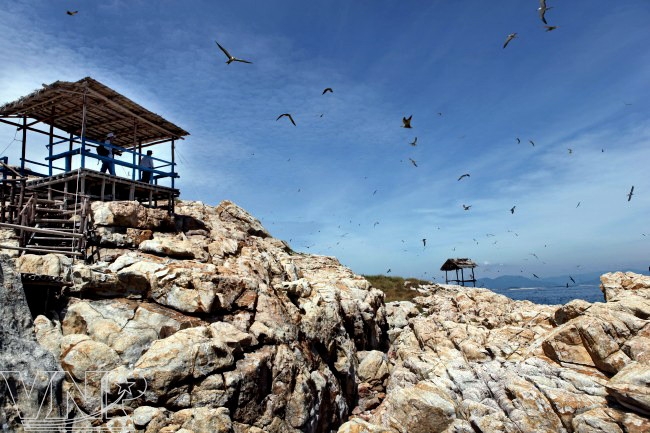 Sam Island is one of the islands which has high salagane nest productivity in Khanh Hoa Province. Photo: Tat Son  Salagane caves are strictly protected using nets. Photo: Minh Ngoc |
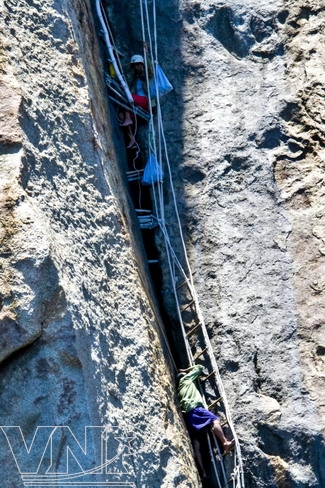
To harvest salagane nests, workers must erect bamboo scaffoldings on the steep cliffs to climb up. Photo: Nguyen Luc
|
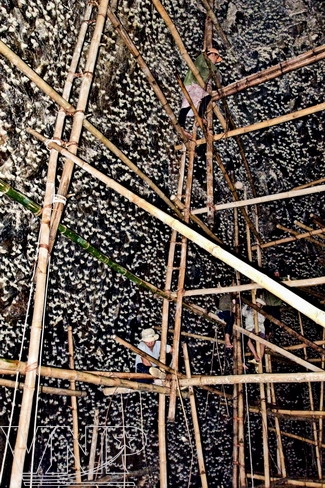 Every year, Khanh Hoa Province harvests over 3tonnes of natural salagane nests. Photo: Nguyen Luc) |
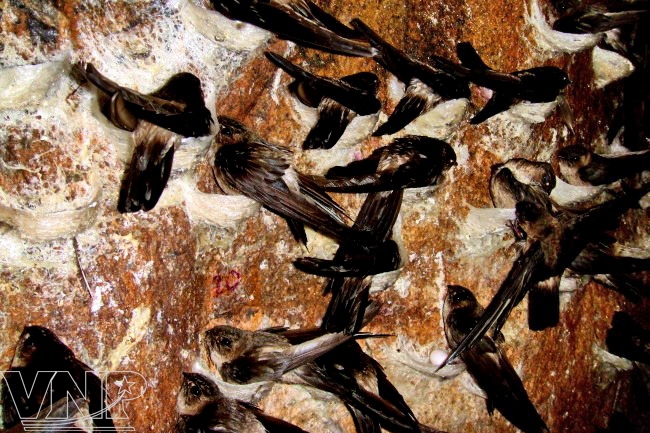 Salagane birds usually make their nests on the high cliffs on Ngoai Island. Photo: Nguyen Luc 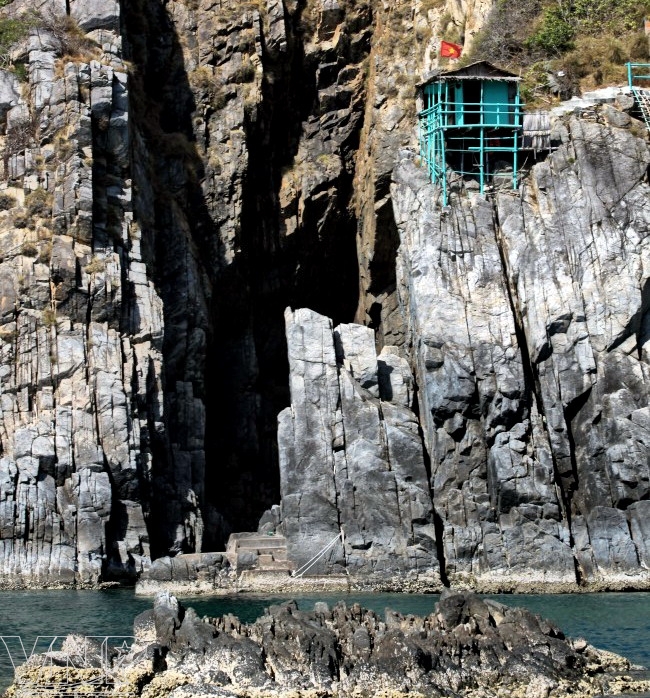 A watch tower of the guards on the steep cliffs. Photo: Tat Son 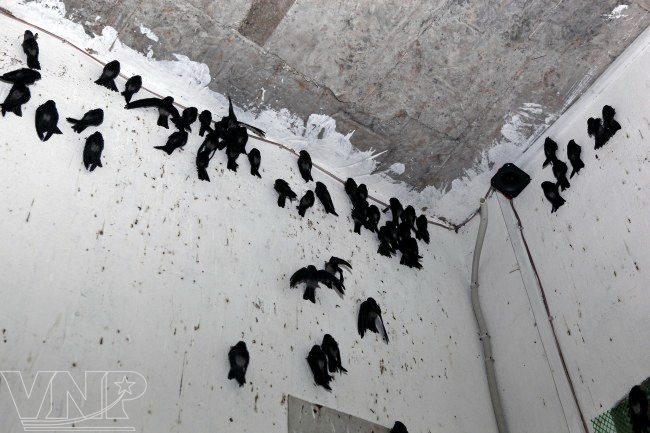 In recent years, raising salanganes in houses has strongly developed in Khanh Hoa Province. Photo: Tat Son 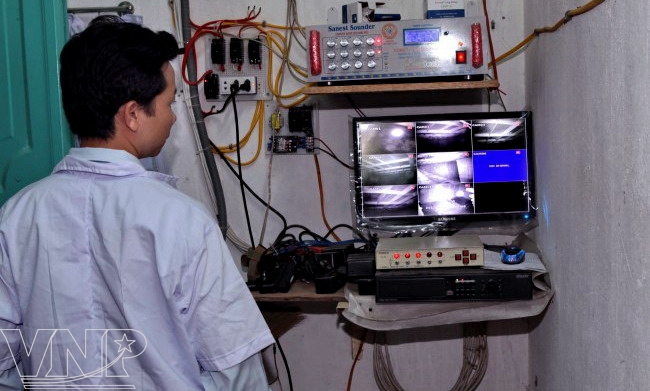 Security cameras helps prevent people from going near the birds. Photo: Tat Son |
| «... Depending on their properties and size, salangane nests are classified into four basic types: Yen huyet (nests with red colour, which are very rare and precious); Yen quan (large nests with white colour, which have very good quality); Yen thien (smaller nests with light green or light yellow colour); and Yen dia (small nests with gray or light green colour). |
Apart from the natural source on the islands, Vietnam has successfully raised the salanganes in houses. Khanh Hoa Province has also taken the lead in this method which is seen as a new model with high economic efficiency. Nguyen Xuan Vien, Director of Sanatech Centre of the Khanh Hoa Salangane Nest Company said that the center has transferred the technology of raising the salanganes in houses to other areas throughout the country, promoting the development of the bird population.
Now the whole country has about 1,500 salangane farming houses with an output of one tonne of nests a year of which Khanh Hoa Province produces half. It is expected that by 2020, the number of these houses will increase to about 10,000, making a great contribution to preserving this species of bird and increasing the national output.
Development of a golden business
For over 700 years, the business of raising and processing salangane nests in Khanh Hoa Province has developed strongly and has become a leading economic strength of the locality.
Vietnam has about 50 salangane islands with over 180 caves, of which 29 islands with 142 caves from Van Ninh District to Cam Ranh City are under the management of the Khanh Hoa Salangane Nest Company. The company produces over three tonnes of nests a year.
To process this high-grade product, the company has invested in a closed, automatic production system using the advanced technology of Germany and Italy. It has also applied the ISO 9001:2000 and HACCP systems to ensure the stable quality of the products and enhance the competitiveness of the company during international integration.
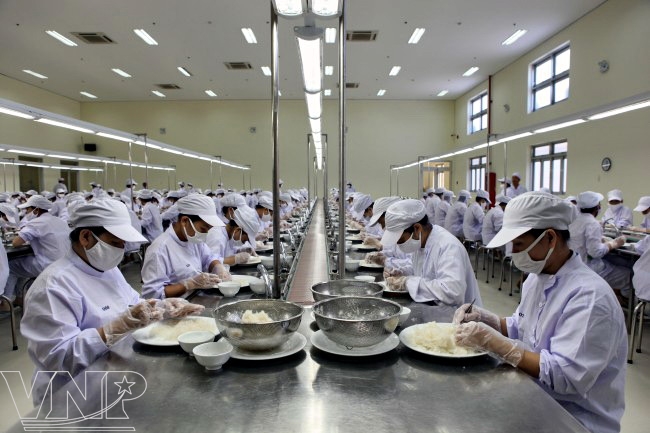 The salangane nest processing line in Khanh Hoa Salangane Nest Company. Photo: Tat Son 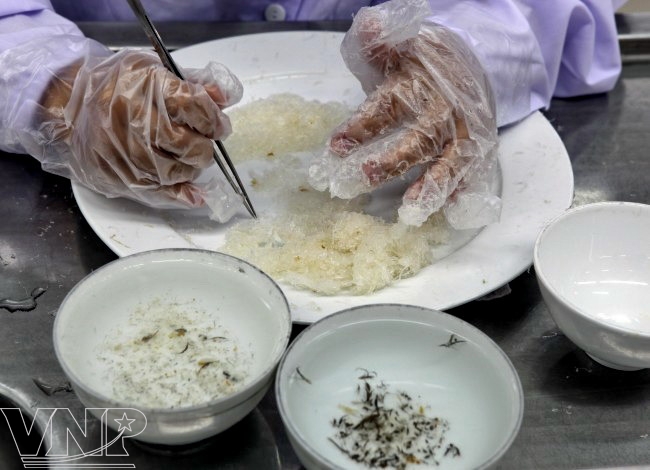 The process of cleaning salangane nests is done manually. Photo: Tat Son  The production line of a high-class salangane drink. Photo: Minh Ngoc 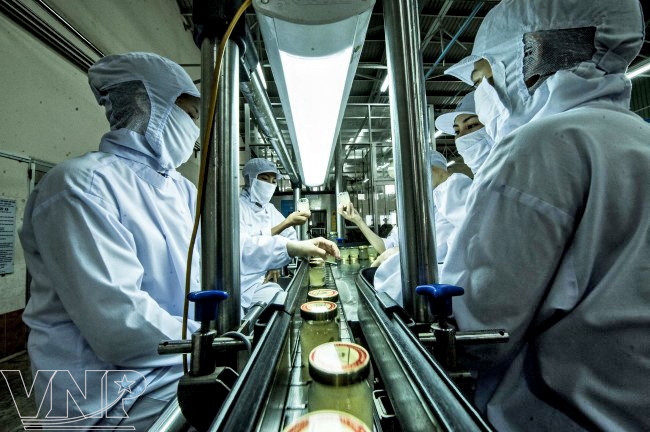 The salangane nest production process is strictly supervised. Photo: Minh Ngoc |
According to the research results of the Biotechnology Center at the University of Fisheries, and the Institute of Biotechnology at the Vietnamese Academy of Science and Technology, Khanh Hoa salangane nests are a pure natural food with abundant nutrients, including 18 essential amino acids.
In recent years, although the amount of exported nests was only 5-6tonnes/year, the price of Vietnam’s salangane nests is always higher than that of other countries in Southeast Asia due to better quality. The price of the cave nests in Vietnam is 60-90 million VND/kg while house nests are 30-60 million VND/kg. Khanh Hoa bird nests products have been exported to 21 countries around the world, including large markets, such as China, Taiwan, the USA, Australia and Singapore.
 Visiting salangane islands in Khanh Hoa Province using high-speed boats. Photo: Tat Son  Khanh Hoa salangane nest products are a well known trademark of Vietnam. Photo: Tat Son 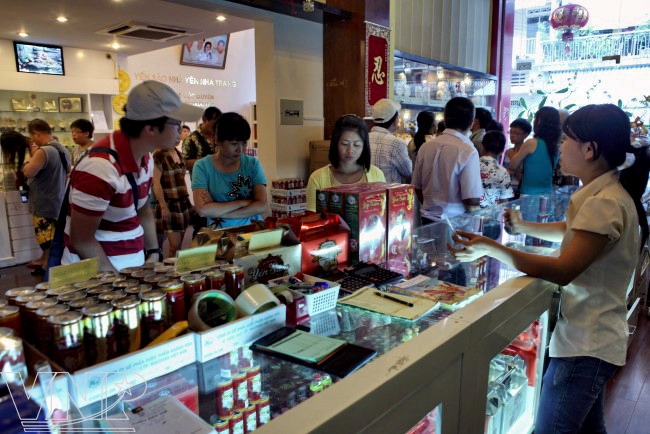 Khanh Hoa salangane nest products are a favourite of customers. Photo: Tat Son |
In the future, if there is a reasonable investment strategy, Khanh Hoa Province can become a center of high-quality salangane nests in the world. These products can develop into a strong brand to promote the country’s image in the international arena.
Story: Bich Van - Photos: Tat Son - Tran Minh Ngoc - Nguyen Luc
Story: Bich Van- Photos: Tat Son - Tran Minh Ngoc - Nguyen Luc

